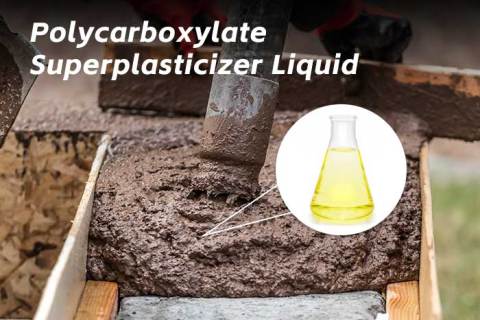
News
This article delves into the core role of Polycarboxylate Superplasticizer liquid in enhancing the high water reduction, flowability, strength, and durability of concrete. It also analyzes its specific applications in ready-mix concrete, precast elements, and special construction projects, aiming to provide technical support for achieving construction structures with greater strength and superior high-performance qualities.
As a Chinese chemical materials manufacturer, we provide high-quality Lithium Carbonate products as a professional additive for concrete and mortar. In modern construction, there is a growing demand for improved early performance of materials, and lithium carbonate effectively addresses these challenges.
Polyether Polyol is one of the key base materials for the synthesis of polyurethane. It is produced through the ring-opening polymerization of propylene oxide, ethylene oxide, and other substances. Depending on its hydroxyl value, functionality, and molecular weight, various polyurethane products can be manufactured with different properties. In the construction sector, we primarily focus on its applications in insulation, sealing, and structural reinforcement.
In India, a climate of high temperatures and humidity poses a severe challenge to building materials. When our Indian partner approached us, they were facing a dilemma: how to produce dry-mix mortar products that ensured both construction efficiency and outstanding durability in such a volatile environment?
As a Chinese chemical materials manufacturer, we specialize in providing high-quality Lithium Silicate products. In the construction industry, particularly for flooring applications, we understand the critical importance of improving concrete durability and surface performance. This article details the key role of lithium silicate as a concrete hardener and sealer, as well as the value we provide as a professional manufacturer.
Hydroxypropyl Methyl Cellulose (HPMC) is a non-ionic cellulose ether derived from natural cellulose through chemical modification. It is a non-toxic, odorless, white to off-white powder that dissolves in cold water to form a transparent, viscous solution. Due to its unique chemical structure, HPMC imparts several key properties to dry-mix mortars: thickening, water retention, dispersion, and film-forming. These characteristics make it an indispensable additive in mortars based on cement, gypsum, and other materials.
In modern construction, concrete slump loss is a common challenge, affecting both construction efficiency and quality. Polycarboxylate Superplasticizer Liquid (PCE Liquid), as a high-performance concrete admixture, is one of the core solutions we offer to address this critical issue.
In modern construction, high-performance materials are key. From durable tiles to energy-efficient glass, innovation relies on quality chemicals. Lithium Carbonate (Li2CO3) is crucial in building ceramics and architectural glass production, enabling superior performance and sustainability.
With the increasing global focus on environmental protection, water-based coatings have become a market mainstream. However, enhancing the application performance, stability, and final finish of these coatings remains a key challenge for manufacturers. Hydroxyethyl Cellulose (HEC), a highly effective multifunctional additive, offers a core solution to these challenges.
Cracking in cement-based materials is a critical issue in the construction industry, affecting durability, aesthetics, and project costs.










